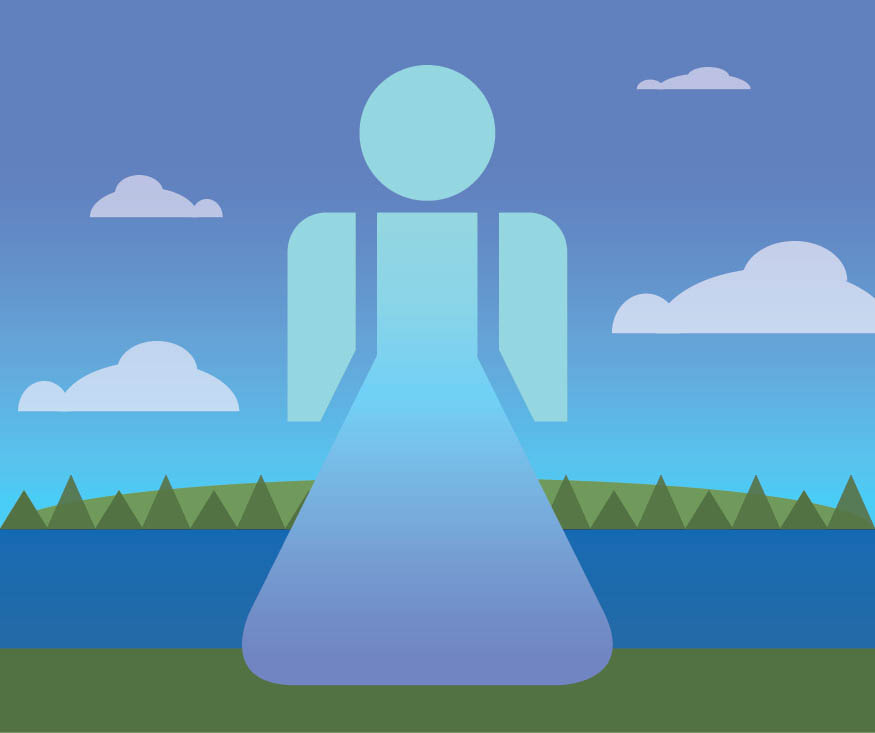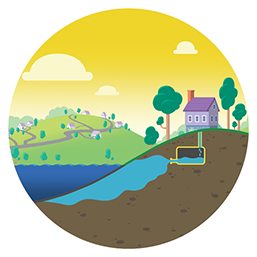SHARE YOUR
WATER STORY

“Share your story about a Atlantic Canadian waterbody. For example, a story about a shoreline, a lake, an ocean, a river or a waterfall. Do you have a fond memory or an issue you’d like to share? Think about a particular time or instance where you connected with that water body. Your story will help document beneficial use of your special place and help protect it for everybody. How has water left a mark on you? Make sure to use #RAH2050 when you share online and be featured on our Instagram and stay up-to-date every week following #WatermarkWednesday
BECOME A
CITIZEN SCIENTIST

Your observations are collected to create a deeper understanding of the state of our harbours. Creative and scientific process are shared in workshops, toolkits and web-based programs. Connect with your neighbours and fellow scientists as you measure your backyard rainfall; learn what species live in your community; learn about your favourite lakes; and share photos for researchers! Add your local knowledge and act to build greater awareness as our climate changes in rapid ways. Have your voice heard and say RAH together for the next generation 2050!!
EXPLORE OUR WATERSHEDS
Click on each circle or pin to learn about our shoreline features.

-

-

-

-

-

-

-

- X
-
 Want a panel installed near you? Click here to find out how!
Want a panel installed near you? Click here to find out how!
watershed colour guide

Boardwalks
Boardwalks and adjacent trails into wetlands and coastal areas allow the public to see the hidden words of wetlands. Few people venture into wetlands as a result of dense vegetation, standing water and deep organic soils. Boardwalks and trails are a more convenient means of access.

catch Basins
As the name implies, sea ducks are adapted to life at sea. With most spending a considerable portion of the year along our coasts, the majority of these birds breed in northern areas such as the Canadian Arctic and Alaska. King eiders will even remain in frigid waters during the winter, staying as far north as the open water will allow. This is possible because they have special adaptations for life in cold environments, such as thick fluffy down with supreme insulation properties and unusual veins and arteries in their legs that warm the cool blood before it is returned to the body.

Flood Plains
A floodplain is the lowland area adjacent to a ditch, river, creek, stream, or lake that can be expected to flood occasionally.
Geological processes such as erosion and sedimentation redistribute toxic pollutants introduced to the landscape by mining, agriculture, construction, and other human activities. A significant portion of these contaminants are insoluble, adsorbing to soils and sediments after being released. By allowing floodwater to slow down and sediments settle out in the flood plain, water quality is improved as the natural vegetation filters out impurities and uses excess nutrients.

fresh water resources
Freshwater environments include rivers, lakes, wetlands, streams and underground aquifers. They store and clean the water that’s crucial for people and wildlife. Healthy freshwater environments supply water for drinking, bathing, cooking, growing crops, swimming and even industrial applications.

hard soft
Hard (impervious) surfaces are areas covered with roads, parking lots, roofs and other surfaces that do not allow water to soak into the ground. Soils compacted by urban development are also highly impervious. The result is a significant increase in the volume of stormwater that runs off the land and significant pollution impacts to local waterways. Surges of stormwater, which result from heavy rainfall on hard surfaces, transport pollution, including excess nutrients from fertilizers, pet waste, gasoline, motor oil, and litter.

Pollution
Roughly 10 percent of the Canadian population is served by private wells and septic disposal systems. These systems were originally designed for houses that were widely separated from their nearest neighbour, such as farmhouses and the occasional rural residence.

Rain Gardens
Bioretention areas, or rain gardens, are landscaping features adapted to provide on-site capture and treatment of stormwater runoff. They are commonly located in parking lot islands or within small pockets of residential land. The surface stormwater runoff is directed into the shallow, vegetated depressions, which increase stormwater storage, filtration, and pollutant reduction.

River
Watersheds are like bathtubs! Water flows downhill through natural and built environments. Count places where land meets water, are there more?

Lake
Everything that passes through our skins, toilets and on-ground flows through our watersheds.

Pipes
The yellow boundary shows where underground pipes carry water to the treatmen plants. This area is called a sewershed and is connected to all our watersheds.

Shoreline
The watershed is all around you. Where water meets land on the shore, by the river and in your home where water comes into and leaves.

Six watersheds drain into our basin. Water washes, filters and flows towards us right here at the red.
WHAT WE’RE DOING AS A COMMUNITY
We do all kinds of things and did you know your neighbourhood is in a watershed ?
Questions Connections Reflections?
QUESTIONS
RAH2050 a small shop NGO based in Nova Scotia, since 2017 has been collecting and supporting local voices
COMMUNITY BUILDING WITH:
-
- Climate Awareness Raising
-
- Local Water Story Collection
-
- Unique, accessible presentations & workshops
-
- Permanent Didactic Shoreline Information Panels
-
-
Educational Resources Sharing & Creation
- Baseline Data Collection
-
CONNECTIONS
One data point at a time really helps understand our local and changing environment.
We help everyone in our Harbour build trusted scientific pathways with your credible observations!
DISCOVER YOUR LEADERSHIP POTENTIAL:
- Share a Coastal photo for researchers: Take a Coastie!
- Join the Community Monitoring Network
Local Meteorologists will use your: Backyard Rainfall!
- Discover Nova Scotia Beaches’ Summer Water Quality
using Swim Drink Fish’s: Swimguide - Monitor the Ocean & our Lakes using: eOceans mobile app: iOS and Android and watch their Explainer video
- Join: iNaturalist
REFLECTIONS
Do you have a blue-sky or grey-day story idea we can help you to highlight? Join our collective story-mapping and amplifying your concerns!
Do You Have Local Issues You Want To Learn More About?
-
- Adding your local story could be a creative question between Art & Science at our shorelines!
- Adding your local data point is a great connection to the scientific process
- Visiting your shoreline and reflecting on your values is a way to begin Re-imagining!
- Stay updated on our ProjectsTab & take action
- Book a workshop & Reach Us today





